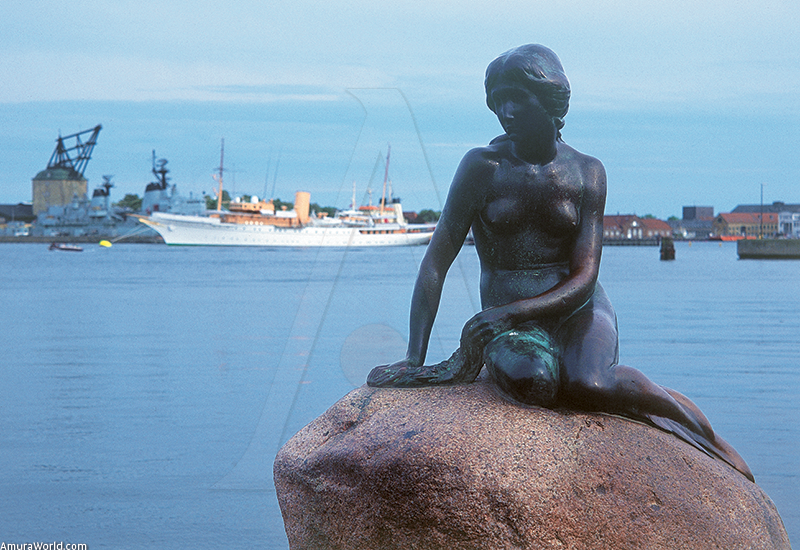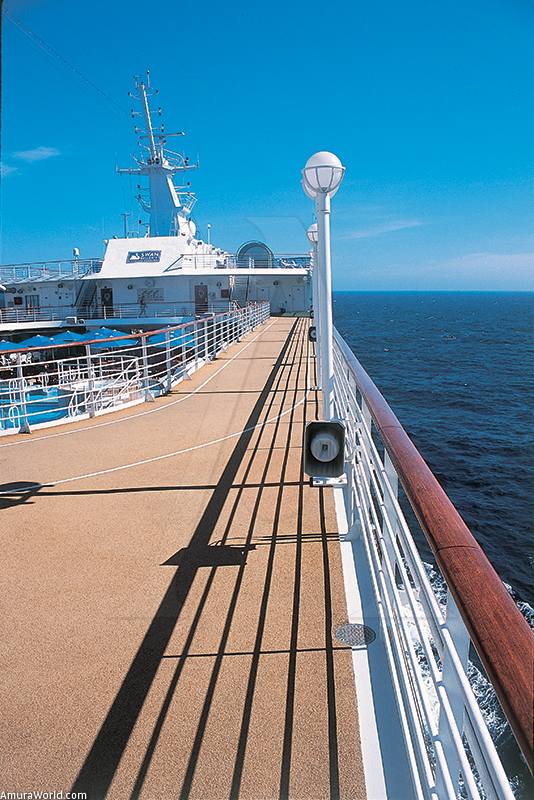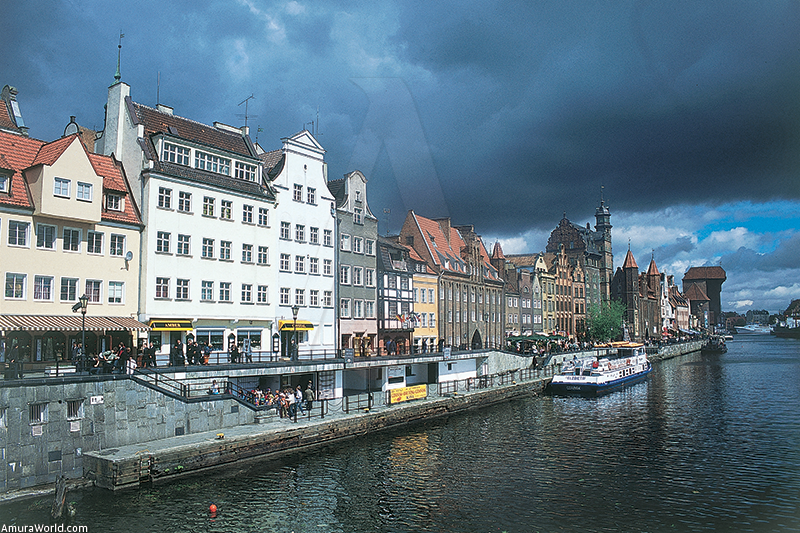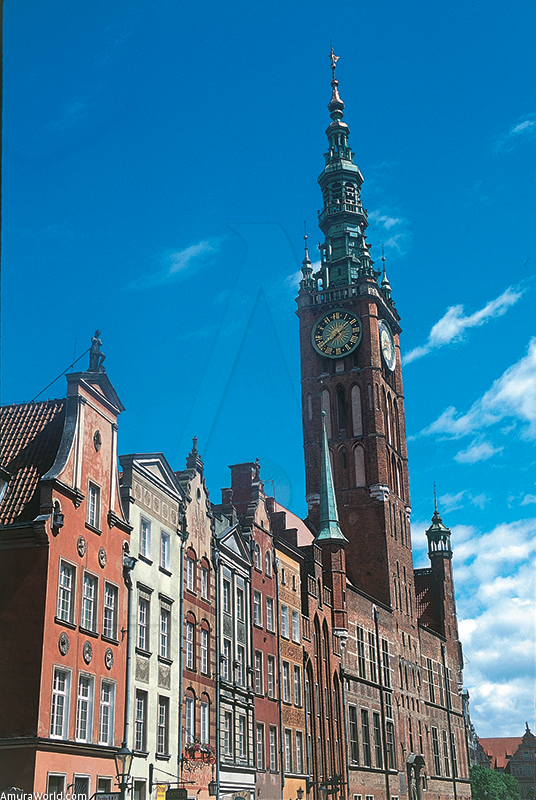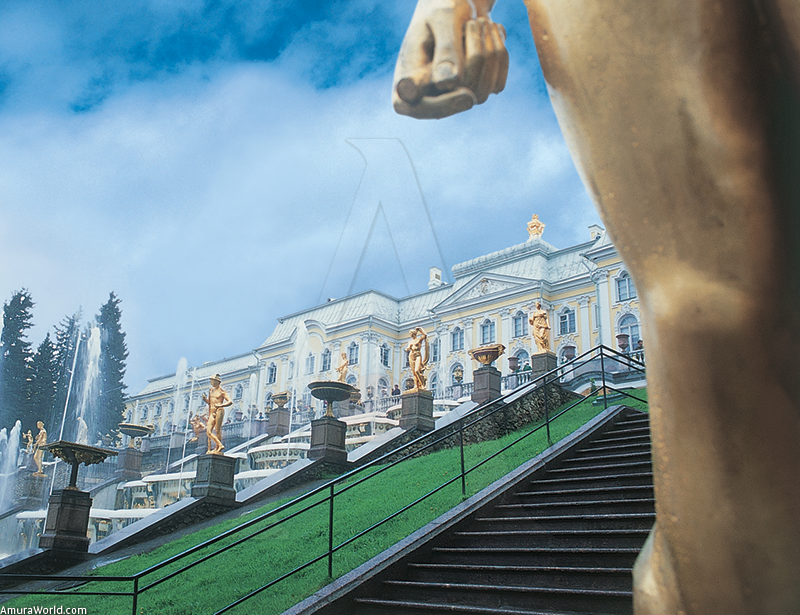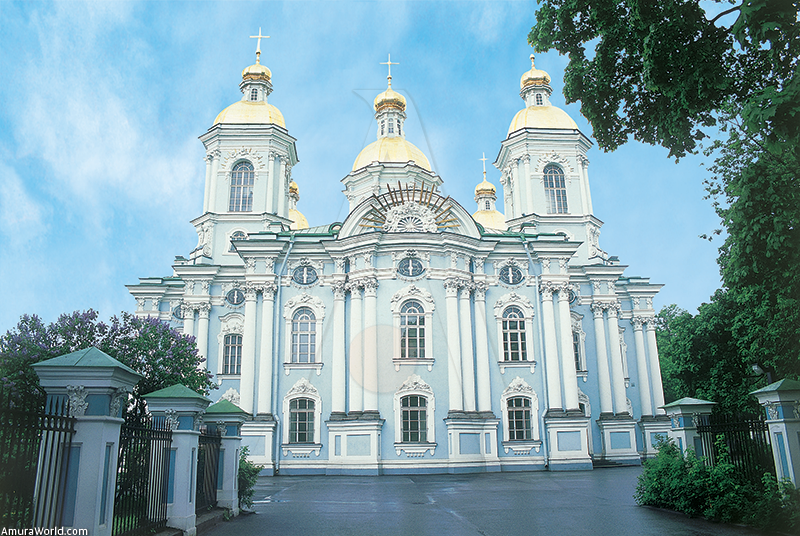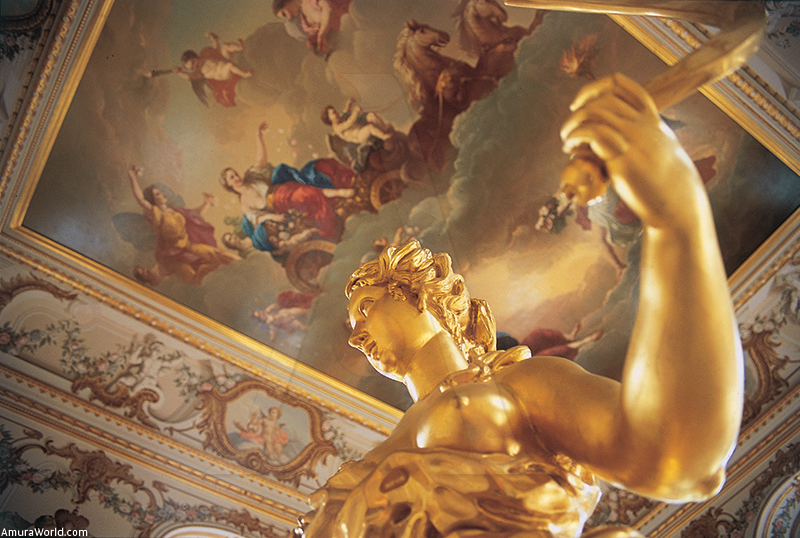From Dover to Saint Petersburg on the Minerva II
The train left us in tiny Dover station and we finally arrived at the port to board the fabulous Minerva II that took us to the land of the Vikings, to the capital of the tzars and the cities of the north.
Minerva II is a magnificent, elegant ship, blue and white, its bow pointed toward unusual horizons. The spacious cabins, which have a balcony, are very cozy.
With a gross tonnage of 30,277, the Minerva II reaches top speeds of 21 knots and a cruising speed of 18.5 knots. It is 594 feet long, the beam measures 85 feet, it has a 20-foot draft and a crew of 300 for a maximum of 600 passengers.
We took off with southerly winds at 5:30 p.m. Captain Richard Hobbs announced a peaceful crossing, sunny with fairly calm seas, for the 660 nautical mile trip that we would make in 42 hours.
We began the cruise attending a lecture and a welcome party, a good opportunity for socializing. We passed through the Strait of Denmark and arrived at Helsingborg at 11:30 a.m. on the third day, where we discovered Sweden, a world of peace, of green fields, and spectacular lilacs blooming in the freshness of a summer that was just beginning.
Day 3: Helsingborg (Sweden)
Helsingborg was a Viking enclave and today is a very active city dominated by the neo-gothic tower of the mayor’s office and the church, at the foot of Sofiero Castle. After touring the city we travel by road to the tiny Port of Raa, an old fishing village that still retains a sense of mystery in its narrow, cobblestone streets and the houses that many years ago waited patiently in the hope of seeing their sailors return.
Landskrona/Malmö (Sweden)
Traveling through the green hills we arrive in Landskrona, with its impressive fort, built by the Danes in 1549 and surrounded by water. It is the best preserved 16th century fort in the Scandinavian countries and has imposing circular brick towers and a wooden drawbridge.
Our next stop was Malmö, with its Malmohus Castle, the old mayor’s office and St. Peter’s church. We pass under the Oresund Bridge, which joins Sweden to Denmark. It is 16 km (10 mi) long and is really a combination of bridge and tunnel. It is most impressive, reaching an artificial island where the road becomes buried in the ground, passes under the sea and arrives at Copenhagen, where we find the Minerva II, anchored in the port protected by the ancient fort built in 1167. It is the largest in the north and consists of a wide canal between islands.
Day 4: Copenhagen (Denmark)
Copenhagen is a beautiful city, protected by its famous mermaid, a small bronze sculpture made in 1913 by Edward Eriksen, and inspired by Andersen’s fairy tales. The mayor’s office of the Danish capital, with its 100 m (328 ft) tower, stands guard over the central plaza, next to Tivoli, those gardens invented over 150 years ago so that residents could enjoy its fountains, restaurants, theaters, amusement park and flowers.
Stroget street, a pedestrian mall, is a good place to shop while enjoying the medieval ambiance of its houses and churches. It takes us directly to Nyhavn Canal, which opens onto the port that is bordered by 18th century houses. The city is a stroll along narrow streets and canals, beautiful buildings, like the old Stock Exchange, which is renowned for its white needle made of four dragon tails, and its Rosenborg, Christiansborg and Amalienborg palaces, where the Danish royal family resides.
Roskilde (Denmark)
The Minerva II spent the night anchored 15 minutes from downtown, and the following day we were able to visit Roskilde, the former Danish capital, with the high towers of its cathedral that date back to the 12th century, where 37 Danish kings and queens are buried.
In Roskilde, which is situated on a shallow bay, the Vikings sank ships in order to leave just one canal navigable and improve their control of arrivals.
At 2 p.m. we set sail to cover the 270 nautical miles that separate us from our next stop, Gdynia, and enjoyed a night of opera on board the ship, accompanied by the glories of Mozart interpreted by four marvelous singers.
Day 5: Gdynia/Gdansk (Poland)
We anchored in Gdynia, Poland at 7 a.m., to visit the beautiful city of Gdansk, an important river port at the mouth of the Vistula river.
The majority of the beautiful Gothic and renaissance-style buildings were rebuilt, based on photos from before the war, and the tower of the mayor’s office dominates beautiful Dlugi Tark plaza, which is surrounded by extraordinary facades.
The brick cathedral is famous for being the largest of its kind in the world and houses a majestic altar with a colored triptych dating from the 16th century that represents the Coronation of the Virgin, a 15th century astronomical clock and a baroque organ.
At 4 p.m. we leave the Gdynia pier to start out on the 322 nautical miles that separate us from the next port.
Day 6: Riga (Latvia)
We enter the Gulf of Riga, with its low-lying, forest-covered hills, and pass the lighthouse at the mouth of the Daugava river at 12:30 a.m., discovering piers where a large quantity of tree trunks were waiting to be transported.
At 1:30 in the morning we arrived in the city of Riga, capital of Latvia, a small country that in 1991 achieved its independence from the USSR. The towers of its churches dominate the panorama and the entire city.
It was almost completely destroyed during the war, but has been beautifully restored and it is a pleasure to walk along its narrow streets, with homes that date from the 14th century, as well as visiting its 13th century cathedral that houses an impressive organ which has 6,700 metal and wood pipes, remains of forts, plazas with cafés on outdoor terraces, and restaurants where diners enjoy the short summer sun.
Day 7: Tallinn (Estonia)
We set sail at 6:30 a.m., leaving the gulf and following the coast around the Estonian islands. After covering 291 nautical miles we arrived at Tallinn at 1:30 in the afternoon of the following day. At night we enjoyed a surprising good Philippine-style show put on by the crew. Tallinn, the pearl of the Baltic, capital of Estonia, is a beautiful city situated at the entrance to the Gulf of Finland. It was founded by Waldemar II of Denmark in 1219, and he built a castle there that same year.
It belonged to the Teutonic knights, Sweden and Russia, and played an important role as an ice-free port during the long winters, which meant trading of the merchandise that arrived here by train from Saint Petersburg could continue. Independent in 1918 and later part of the USSR, Estonia declared its independence in 1991. It still preserves one of the most beautiful medieval corners of Europe, in the shadow of Waldemar Castle, surrounded by a wall guarded by its red-roofed towers. The high city is dominated by the imposing castle towers that protect the cathedral, founded in 1223, and the Alexander Nevsky orthodox cathedral, founded in the 19th century.
The narrow, cobblestone alleyways take us back in time and the low city is a charming world of narrow streets around the plaza with its gothic-style mayor’s office. It is dotted with sumptuous churches, like the 16th century St. Olav, with its needle-like, 100 m- (328 ft-) tall tower, and adorned with the beautiful homes of merchants that date from the 15th century.
At 7 p.m. the Minerva II leaves this enchanting city to sail the 187 nautical miles to Saint Petersburg for an evening of opera.
Day 8: Saint Petersburg (Russia)
We awoke in the Gulf of Finland, passed by Kronshtadt Island, which is where a navigation canal that is marked with buoys—because of the shallowness of the gulf—starts. This is where the beginning of the Neva river delta, and to avoid the shallow waters and get to the river, we are forced to take the man-made canal.
The Minerva II entered like a queen, dignified and commanding, discovering the beautiful buildings. She anchored at midnight at the “English” pier, 500 m (1640 ft) from the Hermitage Palace. From the upper deck the city looked beautiful.
It was founded in 1703 by Tzar Peter the Great, who called it his “paradise”, and in less than 10 years made it the great capital of Russia. Tens of thousands of laborers were forced to work on the buildings and many lost their lives. It is a beautiful, lively city, extremely vital, intriguing, mysterious and worthy of admiration. Rasputin was killed in Yusupov Palace, the Winter Palace and the Hermitage house the important art collection that was begun by Catherine the Great, the grandeur of the St. Isaac Cathedral is imposing, the Peter and Paul Fort still contain the tombs of the Romanovs, from Peter to Nicholas.
Day 9: Saint Petersburg (Russia)
The day we headed west, leaving Peter’s capital at 7 p.m. Captain Hobbs explained the difficulty of this departure because to enter the canal it is necessary to avoid the mouth because the strong current can push the boat, with the risk of throwing it against the pier. It took some very unusual maneuvers, but we were successful. The sun shines on the cupolas of St. Petersburg and we follow our itinerary.
Day 10: On the Sea
The next day was spent sailing to cover the 480 nautical miles to Visby, a port on Götland Island, in Sweden, situated 90 km (56 mi) from the coast, where we arrive the following day at 7 a.m.
Day 11: Götland Island (Sweden)
A northerly wind was blowing, the temperature was no higher than 10 degrees and Captain Hobbs made the wise decision to not enter because a week earlier a ship similar to the Minerva II remained blocked in the port for three days. So we did not anchor in the bay.
Visby, the capital, built its three-kilometer-(two-mile-long-) long wall and 27 towers in 1361 to protect the homes of the rich merchants, its churches (today in ruins) and the imposing cathedral with its towers crowned with black, threatening domes. It is an ideal point of reference for sailors.
At 3 p.m. the bad weather still continued and the return to the ship was an adventure since the feeder vessels moved like nutshells on the water. We took off to cover the 201 nautical miles to Bornholm Island.
Day 12: Bornholm Island (Baltic Sea)
Bornholm Island is 137 km (85 mi) from Denmark, to which it belongs. The following day we arrived at Rone Port at 7 a.m. and it was very sunny.
It is a small paradise with a microclimate that in the summer attracts tourists who enjoy the beaches and hills covered with farmland and forests. In its fishing villages, the wood houses, which shine with bright colors that contrast with the blue sea and have big fireplaces for smoking fish, are dominated by the churches and mills. In the extreme north the impressive ruins of Hammershus Castle is quite imposing, but the most outstanding sight on the island are the round churches built both for worship and for protection against attack. The most beautiful is Osterlars, which dates back to the 12th century. It measures 18 m (59 ft) in diameter and has beautiful frescoes that threaten the faithful with hell.
We started out to sea at 2 p.m., going under the bridge that joins Sweden with Denmark at 7:30 p.m.
Day 13: Kristiansand (Norway)
We arrive in Kristiansand, in southern Norway, the following day at 1 p.m., after having traveled 341 nautical miles. This is the beginning of the fjords, where the rocky coasts are covered with pines and the sea infiltrates every bay, drawing an irregular coast.
In this part of the world the summer is short, nature glows, the wooden houses are adorned with flowers, forests divide the pastures and border the lakes and rivers.
We arrive in Grovane to board a small train pulled by a steam engine that takes us to Royknes, a village on the shore of the lake, following the Otra river gorge, where a wood toboggan transports tree trunks to the coast.
Day 14-15: The Return to Dover (England)
We left the port at 6 p.m., with difficulty due to lateral winds, and began our return trip to Dover, 491 nautical miles away. We arrived in England the following day at 6:30 a.m. The Baltic Sea is a world full of surprises, where harsh winters have forged the strong character of its people and the beauty of its women, where man has built church towers to create mountains where mountains do not exist, where the houses are painted to make them feel alive and the terraces of the cafes begin to fill with life when the short summer starts to peek around the corner.
Text: Patrick Monney ± Photo: Patrick Monney

